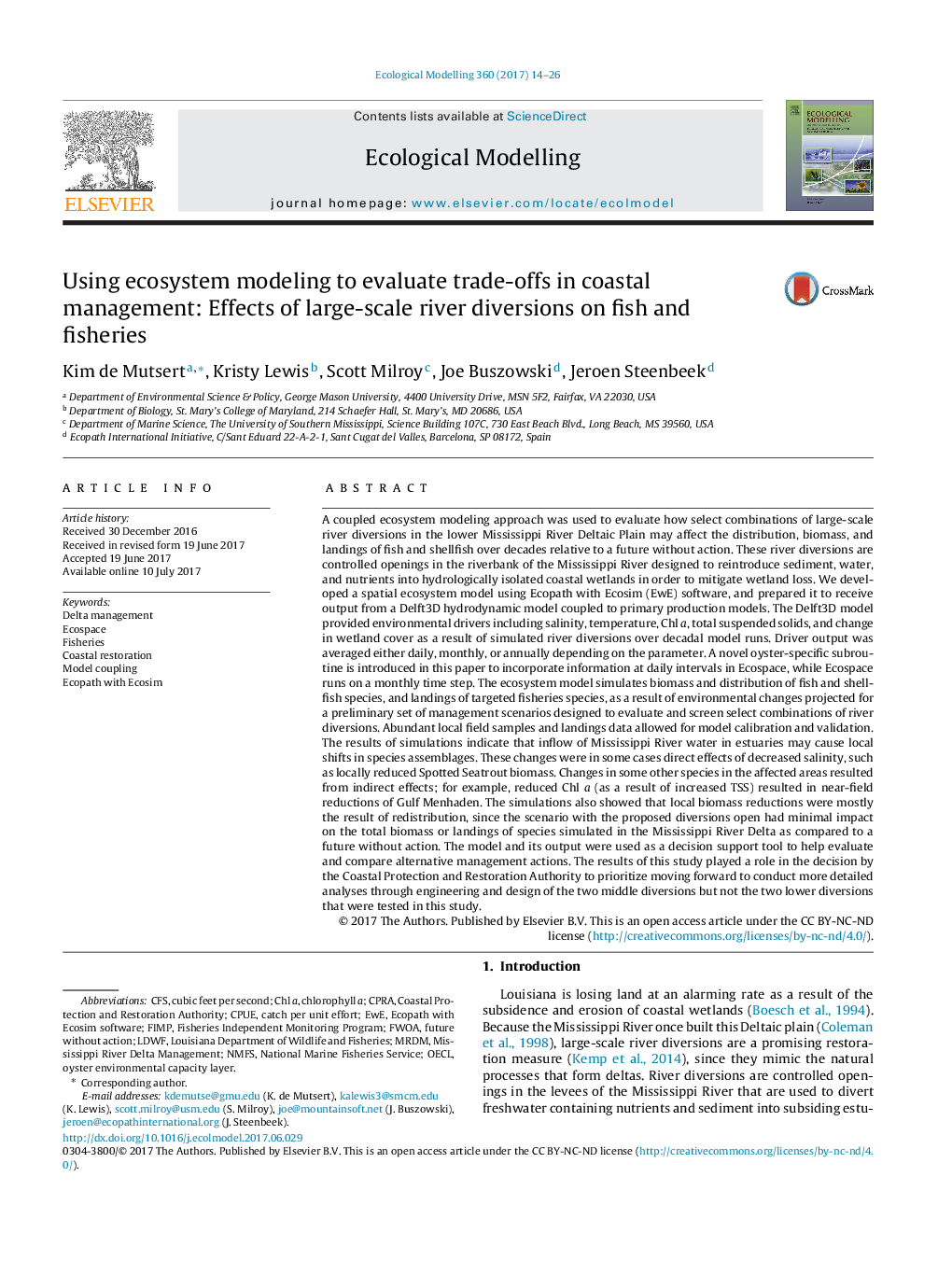| کد مقاله | کد نشریه | سال انتشار | مقاله انگلیسی | نسخه تمام متن |
|---|---|---|---|---|
| 5742044 | 1617387 | 2017 | 13 صفحه PDF | دانلود رایگان |
- Ecosystem model simulates effects of large-scale river diversions on fisheries.
- First use of EwE spatial-temporal framework in coastal management.
- New sub-routine allows for inclusion of environmental drivers at a daily time-step.
- Large-scale diversions reduce fisheries biomass and landings near the outfall.
- Main drivers of fish biomass, distribution, and landings are salinity and Chl a.
A coupled ecosystem modeling approach was used to evaluate how select combinations of large-scale river diversions in the lower Mississippi River Deltaic Plain may affect the distribution, biomass, and landings of fish and shellfish over decades relative to a future without action. These river diversions are controlled openings in the riverbank of the Mississippi River designed to reintroduce sediment, water, and nutrients into hydrologically isolated coastal wetlands in order to mitigate wetland loss. We developed a spatial ecosystem model using Ecopath with Ecosim (EwE) software, and prepared it to receive output from a Delft3D hydrodynamic model coupled to primary production models. The Delft3D model provided environmental drivers including salinity, temperature, Chl a, total suspended solids, and change in wetland cover as a result of simulated river diversions over decadal model runs. Driver output was averaged either daily, monthly, or annually depending on the parameter. A novel oyster-specific subroutine is introduced in this paper to incorporate information at daily intervals in Ecospace, while Ecospace runs on a monthly time step. The ecosystem model simulates biomass and distribution of fish and shellfish species, and landings of targeted fisheries species, as a result of environmental changes projected for a preliminary set of management scenarios designed to evaluate and screen select combinations of river diversions. Abundant local field samples and landings data allowed for model calibration and validation. The results of simulations indicate that inflow of Mississippi River water in estuaries may cause local shifts in species assemblages. These changes were in some cases direct effects of decreased salinity, such as locally reduced Spotted Seatrout biomass. Changes in some other species in the affected areas resulted from indirect effects; for example, reduced Chl a (as a result of increased TSS) resulted in near-field reductions of Gulf Menhaden. The simulations also showed that local biomass reductions were mostly the result of redistribution, since the scenario with the proposed diversions open had minimal impact on the total biomass or landings of species simulated in the Mississippi River Delta as compared to a future without action. The model and its output were used as a decision support tool to help evaluate and compare alternative management actions. The results of this study played a role in the decision by the Coastal Protection and Restoration Authority to prioritize moving forward to conduct more detailed analyses through engineering and design of the two middle diversions but not the two lower diversions that were tested in this study.
Journal: Ecological Modelling - Volume 360, 24 September 2017, Pages 14-26
